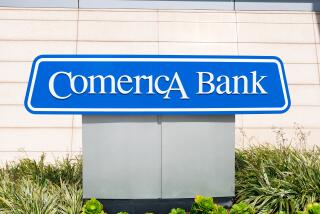S&Ls; Failed at Record Pace During Year
- Share via
WASHINGTON — Savings and loans collapsed in 1989 at the highest rate ever and bank closings fell only slightly short of a post-Depression high, capping a decade of failure for the nation’s financial institutions, regulators said Wednesday.
“I’m not concerned about another Great Depression. . . . But I don’t see 1989 as being the end of this,” said Catherine England, a scholar at the Cato Institute, a conservative research group in Washington.
“I think failures are going to continue to increase into the 1990s,” she said.
The government seized thrifts in Texas and New Mexico on Dec. 21, bringing the tally of failed S&Ls; to 328, far above the previous high of 277 in 1938.
Resolution Trust Corp., the agency created Aug. 9 to carry out President Bush’s S&L; bailout, seized 318 failed institutions last year, disposing of 37. An additional 10 bankrupt S&Ls; were handled by the old Federal Savings and Loan Insurance Corp.
Meanwhile, a commercial bank failure in California and another in New York on Dec. 20 pushed the total to 207 for the year, down from a post-Depression record of 221 in 1988, according to the Federal Deposit Insurance Corp.
The decline, although small, was the first since 1977 when six banks failed, a drop from 17 the previous year.
Last year was the finale for a disastrous decade for the nation’s financial institutions. All told, 1,894 institutions closed their doors during the 1980s: 1,059 banks and 835 S&Ls.;
The problems in commercial banking, while severe, pale in comparison to the 1930s, when 9,508 banks of more than 23,000 in existence at the start of the period closed. There were 4,004 failures in 1933 alone.
However, for S&Ls;, the 1980s represent a crisis more severe than the Depression even though the total failures in the 1930s--1,706--was more than double the 1980s total.
That’s because the latest failures represent a far larger proportion of the savings industry. There were nearly 12,000 thrifts as the 1930s began, only 4,000 in 1980 and little more than 2,600 now.
More to Read
Inside the business of entertainment
The Wide Shot brings you news, analysis and insights on everything from streaming wars to production — and what it all means for the future.
You may occasionally receive promotional content from the Los Angeles Times.










